Across the globe, cultural and natural wonders such as the Taj Mahal, the Great Barrier Reef, and Machu Picchu have earned recognition from the United Nations Educational, Scientific and Cultural Organization as World Heritage Sites. In the words of the organization that set out to protect and preserve these sites from decay and destruction, these global treasures are “irreplaceable sources of life and inspiration.” While there are currently over 1,100 sites inscribed on the list, with new ones added each year, it all started in 1978 when the first 12 sites were revealed. Get to know the lucky first dozen UNESCO World Heritage Sites to make the prestigious list.
Historic Center of Kraków – Poland
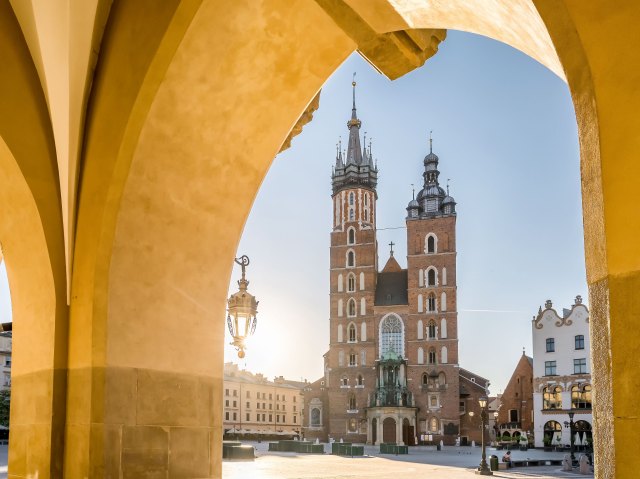
Stepping into the heart of Kraków is like turning back the clock to medieval times. Horses clip-clop along cobblestone streets, while a live trumpeter plays five notes four times every hour from the tower of St. Mary’s Church. Chartered in 1257, the former Polish capital made it onto the UNESCO list because “it is one of the most outstanding examples of European urban planning, characterized by the harmonious development an accumulation of features representing all architectural styles from the early Romanesque to the Modernist periods.” Sitting along the River Vistula, the Wawel Hill complex — which housed the royal residence and is now a museum — rises above the city, while churches and monasteries sit within the medieval wall.
L’Anse aux Meadows National Historic Site – Canada
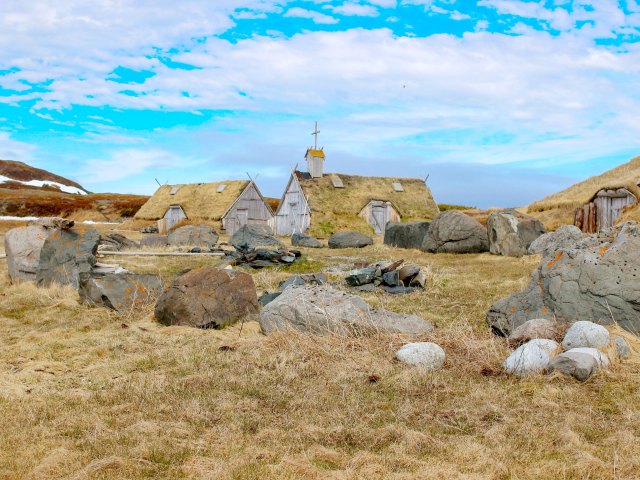
When a small cloak pin was discovered at the L’Anse aux Meadows National Historic Site in 1968, it turned legend into reality. The relic, found by archaeologists Helge and Anne Stine Ingstad, was proof that Leif Erickson and the Vikings had settled in this part of Newfoundland and Labrador, (which they called Vinlan) in the 11th century.
Located at the tip of the Great Northern Peninsula, the site is home to the remains of the eight peat-turf buildings with wood frames that resemble those in Norse Greenland and Iceland. As the “only known site established by the Vikings in North America,” the area was honored by UNESCO as a “unique milestone in the history of human migration and discovery.”
Aachen Cathedral – Germany
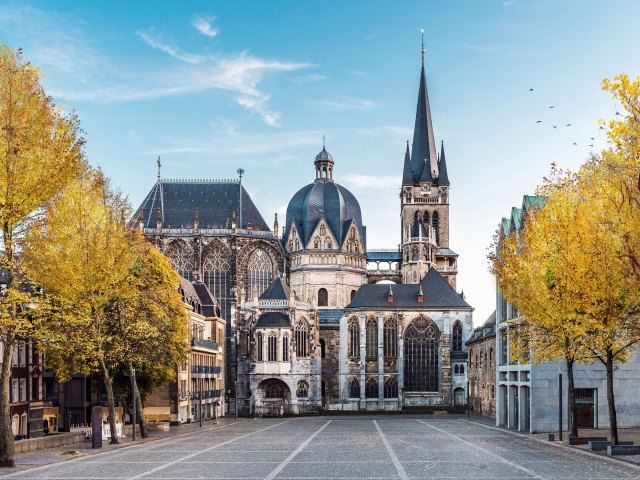
Located in western Germany near the Belgian border, Aachen Cathedral was built as Emperor Charlemagne’s palatine chapel, constructed between 793 and 813 and inspired by the churches of the eastern Holy Roman Empire. He hoped the church, located in his favorite home of Aachen, would symbolize the connection between earth and heaven.
Soon it came to have another significance — as Charlemagne’s burial place, where he was laid to rest in 814. The original octagonal core of the structure, topped with a dome, was expanded in the Middle Ages with precisely measured Carolingian columns. In 1165, Frederick I arranged for the Charlemagne to be canonized by donating a golden Barbarossa Chandelier. After the Shrine of Charlemagne was added in 1215 and the Shrine of the Virgin Mary in 1239, the church became one of the Middle Ages’ most crucial pilgrimage sites. But it’s also significant as the location of a coronation throne, used from 936 to 1531, to crown 30 kings and 12 queens. Destroyed by a 1656 fire and rebuilt, the site became a cathedral in 1930.
City of Quito – Ecuador
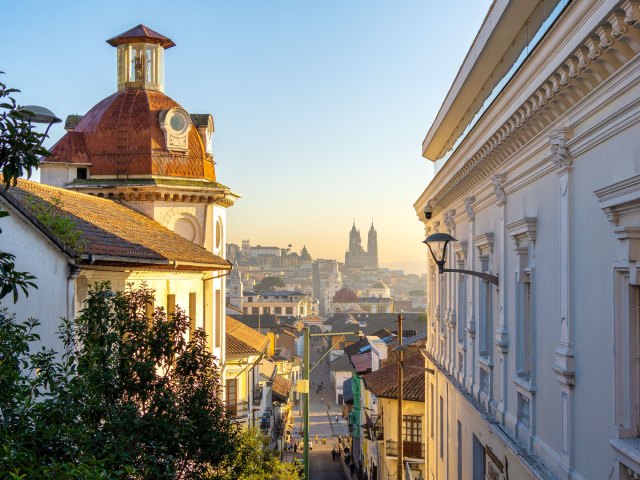
While many travelers only put Quito on their itineraries en route to the Galápagos Islands, they soon find why Ecuador’s capital city earned its own spot as UNESCO’s first Cultural Heritage of Humanity. Sitting in the foothills of the Pichincha Volcano, surrounded by the Pnecillo and Ichim hills, the city was founded in 1534 by Spaniards on the ruins of an Inca city. The historic center showcases the harmonious combination of indigenous and European artistic traditions, especially with the architecture and decorative elements of the San Francisco citadel, Sanctuary of Guapulo, and Recoleta of San Diego, among others.
Also impressive is the design of the city itself in a checkerboard grid of streets aligned with cardinal points. Despite numerous earthquakes, the city has remained the “least modified historic center of all Latin America because of concerted action of the municipal authorities,” according to UNESCO, adding that “Quito forms a harmonious sui generis where the actions of man and nature come together, to create a unique and transcendental work of its kind.”
Galápagos Islands – Ecuador
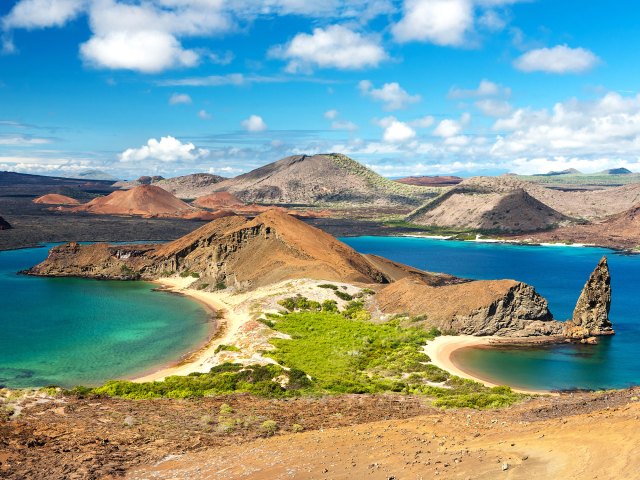
Giant tortoises, sea lions, and iguanas — the endemic wildlife in the Galápagos isn’t just plentiful, the species are also a “living museum and showcase of evolution,” according to UNESCO. With 13 large islands, five smaller ones and 215 islets, the remote area — about 600 miles off of Ecuador’s western coast — is especially known for its marine species and exotic birds, like the blue-footed boobies. Its Pacific Ocean location, at the center of three ocean currents and three tectonic plates, coupled with the seismic activity that formed the islands, provide a literal breeding ground for nature to take its course. Charles Darwin witnessed this during his 1835 visit, when he subsequently developed the theory of evolution.
Island of Gorée – Senegal

The small 69-acre island of Gorée, just two miles off the coast of Dakar, Senegal, is a reminder of a dark past: It was the African coast’s largest trading center for enslaved peoples from 1536 to 1848. Now it serves as a “memory island” as a “symbol of the slave trade with its cortege of suffering, tears, and death,” according to UNESCO.
The native Lebu people were displaced after the Portuguese first visited the island in 1444; it was later ruled by the Dutch, English, and French. The island became filled with haunting contrasts between the enslaved people’s grim quarters and the traders’ elegant homes. Now it stands as a sobering reminder of the past with the Maison des Esclaves (Slave House) and Fore d’Estrées as museums.
Mesa Verde National Park – Colorado

With 5,000 known archaeological sites, 600 of which are cliff dwellings made of sandstone and mud mortar, Mesa Verde National Park is a glimpse into the lives of the Ancestral Pueblo people who lived in the southwestern Colorado area from 550 to 1300. Among the most impressive structures are the Cliff Palace, Balcony House, and Square Tower House, plus various relics like farming terraces, field houses, shrines, and rock art. While erosion caused by wildfires continue and invasive plant species threaten the area, its establishment as a National Park in 1906, along with its 1978 UNESCO honor, seek to best preserve the “significant and living link between the Puebloan peoples’ past and their present way of life.”
Nahanni National Park – Canada
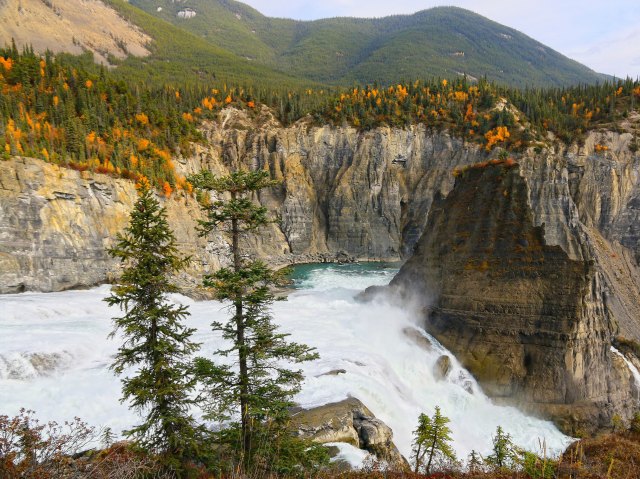
Just how impressive is Nahanni National Park’s Náįlįcho (Virginia Falls)? The 315-foot tall cascade is twice the height of Niagara Falls. And that’s just one of the highlights of the 1.16-million-acre park along the South Nahanni River in Canada’s Northwest Territories. It stands as an “undisturbed natural area of deep river canyons cutting through mountain ranges, with huge waterfalls and complex cave systems,” according to UNESCO. Home to the Dencho First Nations, the granite spires of the Cirque of the Unclimbables float out of the alpine meadow, while the animals of the boreal (subarctic) ecosystem roam — including grizzly bears, caribou, and Dall’s sheep.
Lalibela Rock-Hewn Churches – Ethiopia
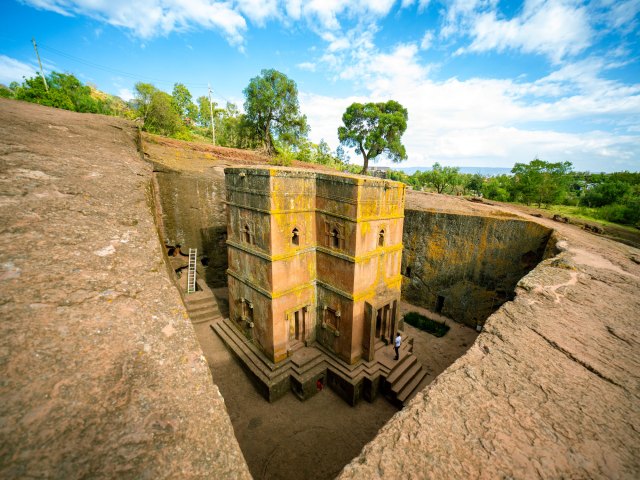
King Lalibela, who ruled from about 1181 to 1221, sought to create a new Jerusalem in Africa that would be within easy reach for all Ethiopians. So more than 800 years ago, in what is now Lalibela, 11 medieval churches were cut out of the volcanic stone. The churches are broken up into two clusters of five, a northern group and an eastern group, with the best known church, the Biete Ghiogis, standing on its own.
As if chiseling out doors, windows, columns, and roofs to create the churches wasn’t already detailed enough, a system of passages and ditches was also built underneath, some which lead to catacombs. Impressively, more than 800 years later, the churches are still used for worship and ceremonies, as UNESCO touts their “unique artistic achievement in their execution, size, and the variety and boldness of their form.”
Simien National Park – Ethiopia
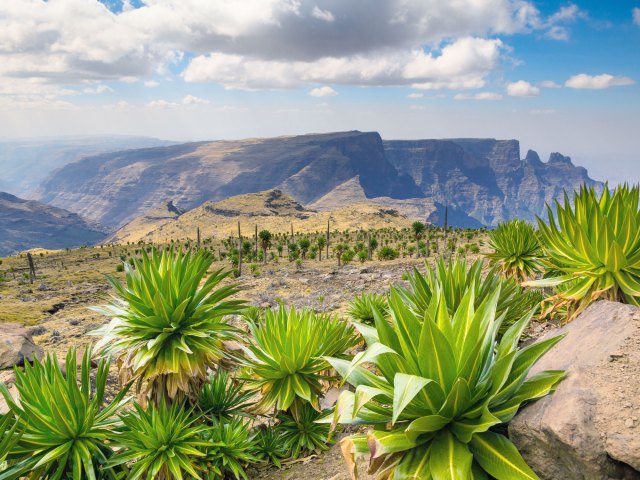
Sitting in northern Ethiopia’s Simien Mountains — which contain the nation’s highest peak of Ras Dejen at 14,872 feet — is Simien National Park. The erosion that happened in the area millions of years ago carved out jagged peaks and deep valleys, which many threatened species have made home. The rare species include the Walia ibex, Gelada baboon, Ethiopian wolf, and an endemic wild mountain goat.As part of the Afroalpine Center of Plant Diversity and Eastern Afromontane biodiversity hotspot, the park is known for its conservation of its 20 large mammal species and 130 bird species. Perhaps the most glowing statement from UNESCO reads, “The spectacular scenery of the Simien mountains is considered to rival the Grand Canyon” — which notably did not make the list until the following year.
Wieliczka and Bochnia Royal Salt Mines – Poland

Just nine miles southeast of the center of Kraków is the Wieliczka Salt Mine; another 18 miles to the east is the Bochnia Salt Mine. Together, they landed on the first UNESCO World Heritage List. The two facilities worked in tandem with one another from the 13th to 20th centuries, as one of European’s earliest major industries — and, for a period, were a joint company that earned royal status.
But they’re more than just tunnels into the earth. Both are extensive underground networks, with the Wielczka one alone having nine levels and 152 miles of galleries, including the spacious St. Kinga’s Chapel. Together, they’re noted for their “diversity of the ensemble in minding, technical, and artistic term, and the completeness of the evidence of the historically ancient working of rock salt” in the southern Poland region.
Yellowstone National Park – Wyoming
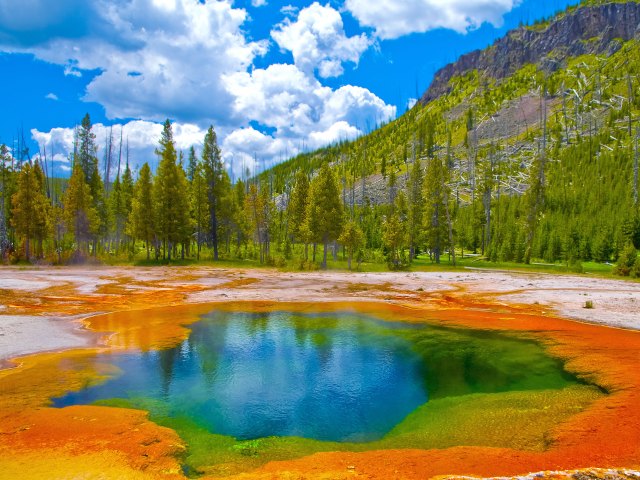
Yellowstone National Park in Wyoming (well, mostly — 3% is in Montana and 1% is in Idaho) stuns by geography alone. It has the world’s greatest concentration of geysers (more than 300), as well 10,000 geothermal features, including hot springs, mudpots, and fumaroles. But that’s just half of what makes Yellowstone so wondrous. The other part is its wildlife, with grizzly bears, wolves, bison, and wapitis. In fact, it tallies up to about 300 species of birds, 16 fish, five amphibians, six reptiles and 67 mammals. It’s no surprise that UNESCO says, “Yellowstone is one of the world’s foremost sites for the study and appreciation of the evolutionary history of the earth.”
More from our network
Daily Passport is part of Inbox Studio, which publishes content that uplifts, informs, and inspires.
















